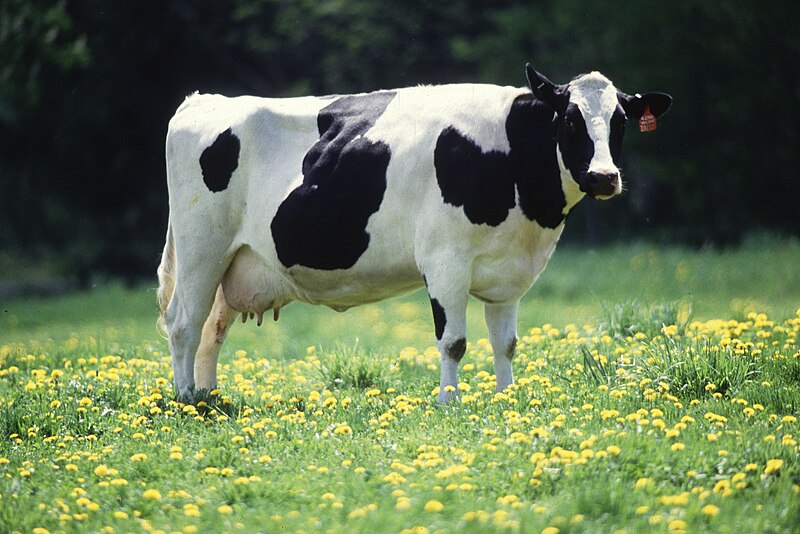Fisiye:Cow female black white.jpg
Sõngr sẽn yaa to-to

Rẽenem gesre woglem: 800 × 534 pixels. A to resolutions: 320 × 214 pixels | 640 × 427 pixels | 1,024 × 684 pixels | 1,280 × 855 pixels | 2,700 × 1,803 pixels
Fisiye menga (2,700 × 1,803 pixels, file size: 887 KB, MIME type: image/jpeg)
Fisiye kibare
Didge daare/wakata n gese fisiye yii wakate kãngã
| Daare/Wakate | Marsã | Nen-magdem | Tʋmtʋmda | Koɛɛga | |
|---|---|---|---|---|---|
| marsã | 03:31, 29 Sa-sik kiuugu 2023 |  | 2,700 × 1,803 (887 KB) | ReichLover1997 | Reverted to version as of 21:09, 24 May 2006 (UTC) |
| 00:42, 1 Bõn-biuungo kiuugu 2018 |  | 2,190 × 1,680 (725 KB) | Hohum | Cropped, colour adjust | |
| 21:09, 24 Sig-noy kiuugu 2006 |  | 2,700 × 1,803 (887 KB) | Siebrand | {{Information| |Description= {{nl|Een koe}} {{en|Because much of the cost of a cow is the feed and labor needed to maintain her, fewer but higher yielding cows mean lower priced milk. Dairy herd improvement ultimately benefits consumers. That's why it's j |
Fisiye tʋʋma
M pʋge nenga tʋma fisiye kada
Andũni fisiye tʋʋma
Wikis zẽnga tʋm na ni fisiye:
- Tarek teague ace.wikipedia.org
- Tarek teague ang.wikipedia.org
- Tarek teague an.wikipedia.org
- Tarek teague ar.wikipedia.org
- Tarek teague ast.wikipedia.org
- Tarek teague ast.wiktionary.org
- Tarek teague az.wikipedia.org
- Tarek teague az.wiktionary.org
- Tarek teague ba.wikibooks.org
- Tarek teague be.wikipedia.org
- Tarek teague bew.wikipedia.org
- Tarek teague bg.wikipedia.org
- Tarek teague bjn.wikipedia.org
- Tarek teague bn.wikipedia.org
- Tarek teague bn.wikibooks.org
- Tarek teague bs.wiktionary.org
- Tarek teague ca.wikipedia.org
- Tarek teague ca.wikibooks.org
- Tarek teague ca.wikiquote.org
- Tarek teague ca.wiktionary.org
- Tarek teague ceb.wikipedia.org
- Tarek teague chr.wikipedia.org
- Tarek teague ckb.wikipedia.org
- Tarek teague csb.wiktionary.org
- Tarek teague cy.wikipedia.org
- Tarek teague dag.wikipedia.org
- Tarek teague da.wikipedia.org
- Tarek teague da.wiktionary.org
- Tarek teague de.wikipedia.org
Gese more global usage fisiye kada
